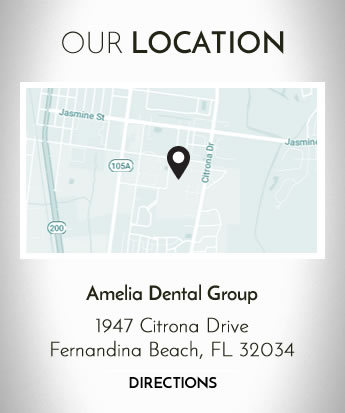
If you are either planning to undergo cosmetic dental procedures or necessary treatments for dental problems, there is a case to be made for considering sedation dentistry. Sedation dentistry refers to the use of medications in varying forms to calm and relax you prior to and during a dental procedure. Just a few reasons to consider dental sedation include:
- Dental sedation can be used for essentially all regular dental procedures. Under sedation, your dentist can accomplish far more in one appointment, meaning less overall time for you in the dental chair. Procedures that may normally take 2 or 3 visits to the dentist can be completed all in one visit with the help of dental sedation.
- Normally, dentists do not like to work on both sides of the mouth at the same time as this requires anesthesia to each side and could cause the patient to bite their tongue. Sedation dentistry allows your dentist to work on both sides of the mouth in one sitting.
- Dental sedation allows you to feel relaxed and free from stress while the actual procedure is being performed. In many cases, even though you are still conscious, you will not remember any of the actual time you spent in the dentist chair.
With sedation dentistry, there is no need to dread dental treatments and procedures. Your fears and anxiety should not deter you from seeking the cosmetic or restorative dental care that you desire. Consult with your dental professional about the options offered for sedation, and schedule your oral care with the confidence that you will have a calm and pleasant experience while improving your smile.
Schedule your appointment at our Fernandina Beach dental office

Cosmetic dentistry is becoming an increasingly popular option for improving not only the appearance of your smile but your overall self-confidence. If you are considering cosmetic dentistry as a means to better both your smile and your image, the following may answer some of your most common questions:
What can cosmetic dentistry fix? Cosmetic dental treatments and procedures can fix a multitude of issues including crooked, gapped, stained, discolored, broken, or missing teeth.
How do I locate a qualified cosmetic dentist? Search for a dentist who is accredited with the American Academy of Cosmetic Dentistry (AACD). Inquire about a potential dentist’s training and experience with the treatments you are seeking, as well as referrals and photos from previous patients who have undergone the same procedures.
What are some common cosmetic dental procedures and treatments? Porcelain veneers, composite bonding, dental implants, teeth whitening, and tissue sculpting are all examples of cosmetic options available to improve your smile.
How long will the process take to achieve a better smile? The length of time varies dependent on the type of procedure or treatment and also on your individual needs. However, many cosmetic procedures can be completed in as little as one or two dental visits.
How can I preview what my new smile will look like? Modern technology allows your cosmetic dentist to use computer-aided imaging and models to show the potential of your new smile.
How long can I expect my improved smile to last? With proper oral care and consistent visits to your dentist, most cosmetic dental treatments and procedures can last for many years and even decades.
With the help of cosmetic dentistry, an improved smile will boost your self-confidence, as well as better your overall oral function and health. Consult with an accredited cosmetic dentist to develop a treatment plan that addresses your specific cosmetic concerns and get ready to greet the world with a bright, new smile!
Our dental office is located in Fernandina Beach

Reaching for a sports drink may seem like a smart way to rehydrate during a big game or after completing your exercise regimen, but you may not be as educated as you think. Consumption of sports drinks is on the rise, with 62 percent of American teenagers drinking at least one a day. That’s why it’s important to inform consumers that these drinks which are touted to help your body can also take a toll on your health, at least on your oral health. Let’s find out exactly how sports drinks can negatively impact your teeth.
What makes sports drinks harmful?
You might guess that sugar is what makes these drinks less appealing. It’s true that you should avoid the brands heavy in sugar, but that’s actually not your teeth’s biggest enemy in sports drinks. It’s the high acid content that presents the most danger. Researchers have found that sports drinks have so much acid that they can start damaging your teeth after just five days of regular consumption.
Aren’t they better than drinking soda?
Most people choose these drinks thinking they will enhance their sports performance, and that they’re a better option than soda. Sports drinks are not that different than soda because they contain as much or more sugar. It’s simply not true that sports drinks are healthier for your teeth than soda.
What kind of damage can they do?
The acid in sports drinks can cause irreversible damage to your teeth. They erode your enamel, which is the shiny outer layer of your teeth, causing them to become sensitive to temperature changes and to touch. It also increases your risk of decay and cavities.
How can I avoid harming my teeth?
If you just can’t give up sports drinks, at least try to minimize the amount you consume. Rinse your mouth with water afterwards, but don’t brush your teeth immediately because it might spread the acid around your mouth. Wait about an hour for the pH level in your mouth to normalize, and then brush. You can also chew sugarless gum after having a sports drink, which increases your saliva flow and helps to return your mouth’s acidity levels back to normal.
Schedule your appointment at our Fernandina Beach dental office

Kids don’t always play it safe or make the best decisions when it comes to protecting their teeth. Tooth decay and mouth injuries are just a couple of things parents must worry about for their kids, whether it’s the elementary school or college years. Here are some simple ways that parents can teach their kids to protect their teeth.
Limit sports and energy drinks.
Sports and energy drinks are both heavily marketed toward today’s youth. It is true that sports drinks help replace electrolytes during exercise, but many people drink them too much or outside the exercise realm. Experts have deemed sports drinks to be unnecessary in the lunchroom or as a snack on the playground. The high acid levels in these drinks can erode tooth enamel, with energy drinks determined to cause twice as much damage. It is recommended to save sports drinks for very strenuous activities, and instead stick with water for hydration and refreshment without the negative effects.
Insist upon mouthguards.
Parents should provide mouthguards for kids in nearly any sport, even if it isn’t considered mandatory by the school or team. Mouthguards can prevent chips, fractures, or knockouts of teeth, as well as protect the soft tissues of the mouth. According to research estimates, 3 million teeth were knocked out in youth sports in 2011. Dentists suggest that athletes who don’t wear mouthguards are 60 times more likely to sustain oral injury. Inexpensive basic mouthguards or the boil-and-bite variety are available at sporting goods stores, or customized mouthguards can be purchased through your dentist.
Say no to oral piercings.
Although it applies primarily to teenagers and older, the Academy of General Dentistry advises against oral piercing for active people. Those with piercings should remove them before participating in sports, because puncture wounds can lead to infections related to increased blood flow and breathing rates during exercise. If your child is considering and oral piercing, make sure you discuss the risks and need for removal during physical activity.
Our dental office is located in Fernandina Beach

Denture technology has come a long way since the days of George Washington and his wooden teeth. Unfortunately, people still lose teeth for a variety of reasons including periodontal disease, trauma, and decay. Missing teeth make talking and eating difficult, and can ultimately cause sagging facial muscles. However, with today’s advances in technology it is more possible than ever to replace those lost teeth with natural and comfortable dentures.
Complete dentures cover both upper and lower jaws. The options for complete dentures range from immediate dentures to highly customized implant dentures. Immediate dentures are pre-made and available at your dentist’s office. They are not custom fitted and are set into gum sockets immediately upon removal of your teeth. While these offer the convenience of walking immediately out of the dental office with your new teeth in place, once gum tissue heals and swelling reduces they may shift and become loose. This issue requires follow-up visits for your dentist to make adjustments. People with immediate dentures may also have difficulty speaking, or experience a “clicking sound” when talking.
Conventional full dentures can be made 8 to 12 weeks after tooth loss or removal. Once the gums have healed, your dentist takes a series of impressions of your mouth to be sent away to a dental lab to create your dentures. This process may require multiple visits to your dentist to ensure a proper fit and correct bite. While this process takes longer and is more involved than immediate dentures, you will achieve a more secure and personalized fit. Both conventional and immediate dentures require the use of denture adhesives to keep them securely in place.
For an even more custom, natural looking and secure denture option, implant dentures are an excellent alternative. With implant dentures, small implants are placed in the jaw where they heal in place surrounded by the bone. The denture then snaps into the implant with attachments under the denture. These attachments keep the denture stable, providing more comfort and confidence. You do not have to worry your dentures will slip or fall out while you are eating, talking, or laughing. Implant dentures do not require the use of any denture adhesives.
Talk to your dental professional to determine the best use of denture technology to ensure many years of a confident and comfortable smile.
We treat patients from Fernandina Beach and the surrounding area

Having a smile that embarrasses you is not a good way to go through life. With so many options available for improving the way your teeth look, there’s no reason to continue trying to hide them. One of the best options available today is Invisalign, or invisible braces. This innovative technology may be able to help you transform your smile without the hassles of traditional orthodontics.
Invisalign consists of a series of clear plastic aligning trays that gently shift your teeth into better positions. Practically invisible when worn, these aligners are removable for eating and cleaning. No dealing with a mouthful of unsightly metal, avoiding restricted foods, or worrying about food becoming stuck in your braces.
What types of problems can Invisalign correct? Some common flaws include gaps between teeth, crowded teeth, overlapping teeth, mild malocclusions, or twisted teeth. Issues like these not only impact the appearance of your smile, but can also cause oral health complications such as difficulty in cleaning or improper wearing on your teeth.
Who should consider Invisalign? Anyone with teeth problems like those above is likely a good candidate, especially those who want to make the best impressions on others in their professional and personal lives. If you want to repair your smile without wearing traditional braces and have the choice of removing your orthodontics for special occasions, then you’ll find Invisalign very appealing. This applies to patients of many ages, from adults in the working world to self-conscious teens. Invisalign is a great solution for those who play sports or play musical instruments that might be hindered by traditional braces.
If you are unhappy with your smile, schedule a consultation with a professional who offers Invisalign as a treatment option. Find out if this treatment can help you, and begin your journey to a brand new beautiful smile.
If you need a dentist in Fernandina Beach contact us today







